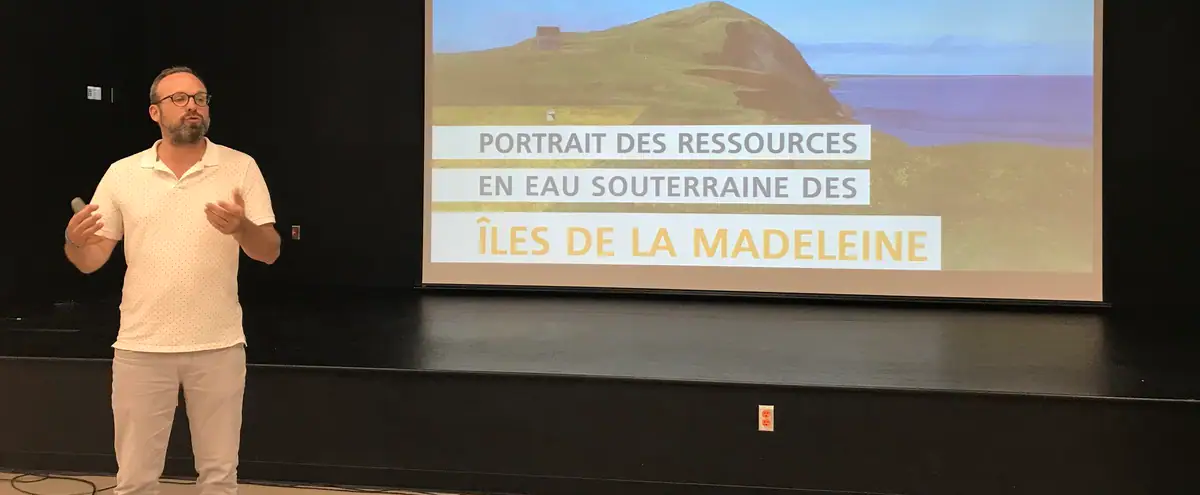While several localities in Quebec are concerned about their future supply of drinking water, the Îles-de-la-Madeleine archipelago has significant aquifer reserves, but with a unique character, given the risks of groundwater infiltration by salted water.
According to a study carried out by researchers from Laval University on behalf of the Ministry of the Environment and the Fight against Climate Change (MELCC), presented to citizens last Wednesday evening, the Municipality of the Islands thus has a good in the long-term management of its wells, although vigilance is required.
PHOTO COURTESY / Laval University
Numerical hydrogeological modeling carried out within the framework of this study makes it possible to evaluate the total freshwater reserves of the archipelago at 2.715 million cubic meters (Mm3), while the annual recharge of the water table is 49 Mm3. The annual drinking water consumption of 2.24 Mm3 represents only 4.6% of the refill volume.
The Municipality of the Islands has a network of 45 wells – of which only 38 are currently in operation -, which makes it possible to distribute the pumping pressure on the water table in order to slow down the rise of salt water towards the surface.
Michel Lemieux, full professor in the department of geology and geological engineering at Laval University who coordinated the study, points out that there is also room for new drilling if necessary. “But the current networks are sufficient and could be sufficient to meet the additional demand caused by population growth or even to take into account the effect of climate change which would diminish groundwater resources,” he says. So it’s a groundwater management and exploitation issue. The flow management must be done in a fairly fine way.
That said, the Islands’ drinking water well network is vulnerable to the slightest surface contamination related to human activities. Mr. Lemieux also recommends that the Municipality expand the protection areas to all sectors likely to be drilled in the future. “Protecting only the catchment areas as we currently do, that is not enough, insists the professor-researcher. We must plan for the future by protecting the resource. This is important because it may be called upon in the future if the needs increase, or if the current wells have to be closed for any reason.
The Municipality of Îles-de-la-Madeleine has the largest number of municipal wells in Quebec. In comparison, Trois-Rivières ranks second with about thirty wells for a population almost five times greater than that of the Madelinot archipelago.

